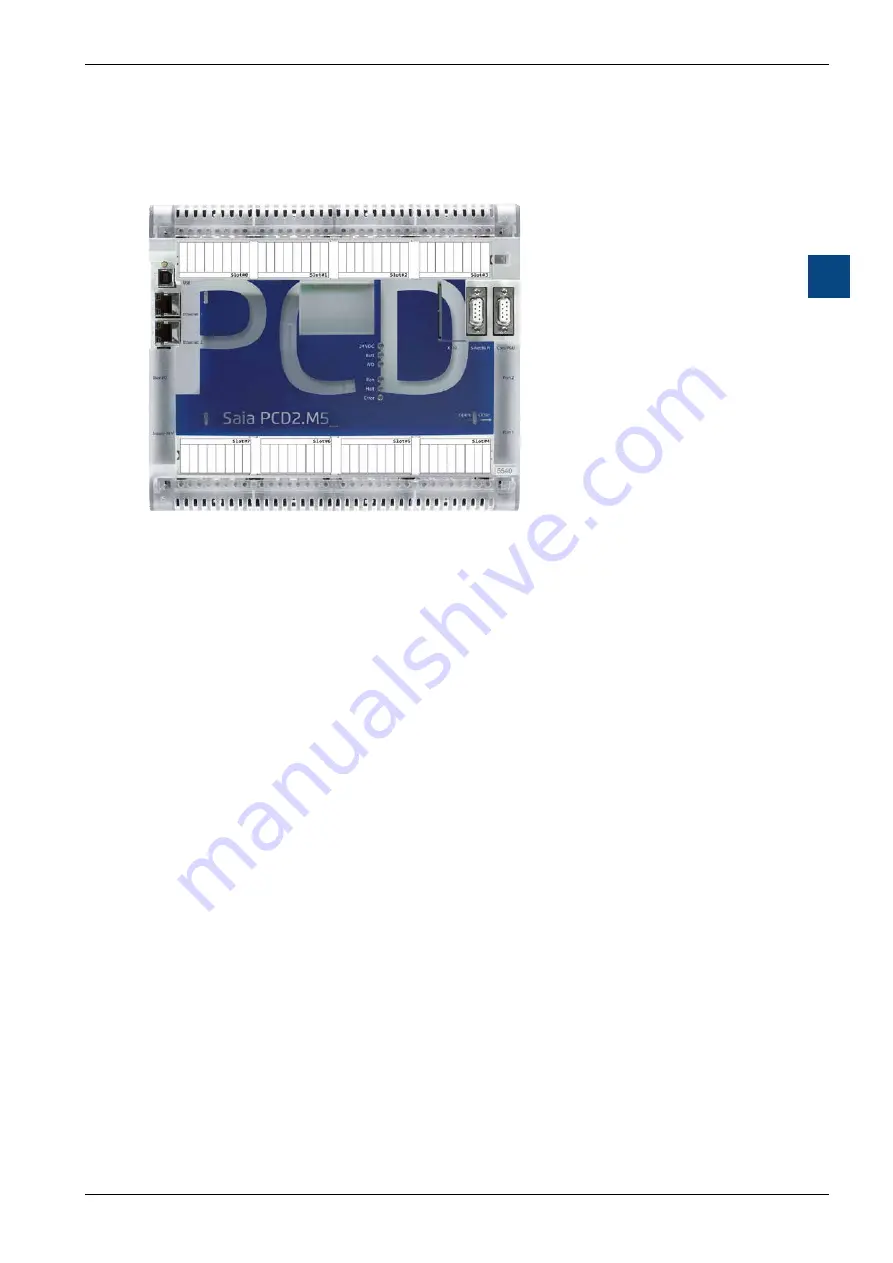
Hardware Manual for the PCD2.M5 Series│Document 26/856; Version EN 12│2014-07-24
Saia-Burgess Controls AG
System overview
PCD2.M5_ Classic CPUs and expansion housings
3-1
3
3
PCD2.M5xx0 CPUs and module holders
3.1
System overview
The PCD2.M5_ series is basically a combination of the PCD2 housing design
and circuitry with extensive compatibility and ease of upgrading along with PCD3
technology. The proven functions of the PCD2 series have been supplemented with
new functions such as USB and "onboard" Ethernet, and the facility to use flash cards
and/or future SD memory cards (for program backup, file system for web pages, data,
documents, etc.). For easy labelling of the I/O signals, there are preprinted sheets
that can be protected by the transparent covering. I/O modules can be reconnected
or replaced without removing the central housing.
The circuitry and labelling have been completely revised. When I/O modules are
replaced, the electronic components on the CPU are protected. However, the I/O
modules themselves must not be plugged in or removed with the power on, the
supply voltage and the ex24 V must be disconnected. As with the PCD3, the
CPU has no jumpers; all the required functions have to be configured in "Hardware
Settings". The unit provides 4 integrated ports and two RJ-45 Ethernet sockets,
including switch. These make the PCD2.M5_ an extremely powerful communication
system. FTP and web access are also supported directly via http.
On the motherboard there are also 6 digital inputs (4 interrupt inputs or one encoder
connection) and 2 outputs. The option to configure the inputs as interrupt or encoder
inputs and the outputs as pulse-width-modulated (PWM) means that the PCD2.M5_
can be used as a "low-cost solution" for machinery and systems.
SBC S-Net networking concept
SBC
S-Net is the name of the new, flexible networking concept for innovative and
economical automation systems with Saia PCD
®
.
●
Based on the Ethernet-TCP/IP (Ether-S-Net) and Profibus (Profi S-Net) open
standards: use of existing network infrastructure → no duplicate cabling
required















































